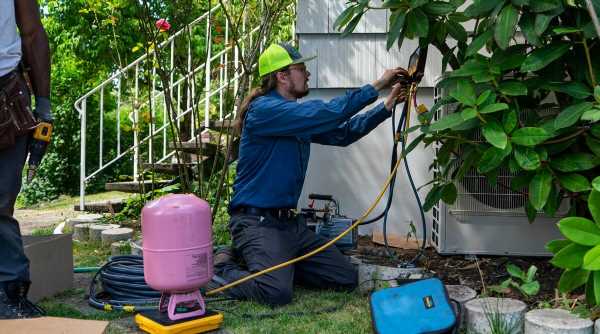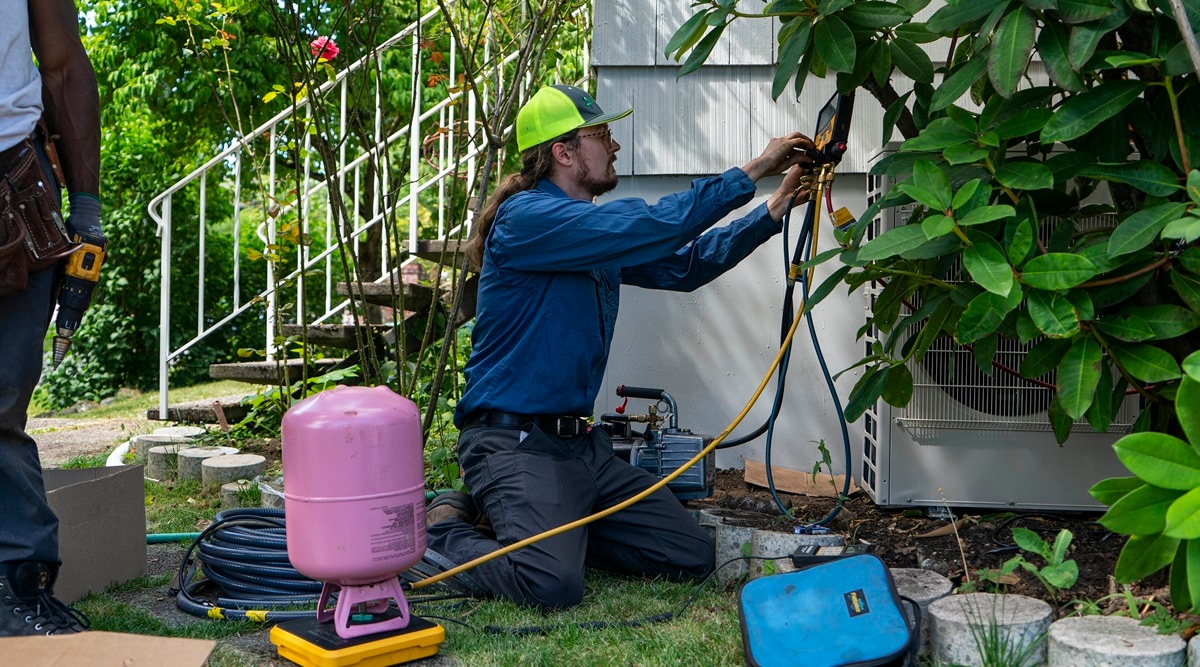Some energy experts, as well as cities like Berkeley, California, and Denver have recently started exploring a counterintuitive strategy: Soaring demand for air conditioning might actually be a prime opportunity to reduce fossil fuel emissions and fight climate change.
Written by Brad Plumer
As global warming fuels deadly heat waves across the country, more Americans in places like the Pacific Northwest are rushing out to buy air conditioners for the first time.
One common concern is that a surge in air conditioning could make the planet even hotter by increasing the need for electricity from power plants running on coal or gas, which produce emissions that drive global warming.
But some energy experts, as well as cities like Berkeley, California, and Denver have recently started exploring a counterintuitive strategy: Soaring demand for air conditioning might actually be a prime opportunity to reduce fossil fuel emissions and fight climate change.
The idea is simple: If Americans are going to buy air conditioners anyway, either for the first time or to replace older units, why not convince them to buy electric heat pumps instead? Although the name can be confusing, an electric heat pump is essentially an air conditioner that is slightly modified so that it can run in two directions, cooling the home in the summer and providing heat in the winter.
That extra heating function is the key to helping tackle climate change. During the cooler months, heat pumps could warm homes far more efficiently than the furnaces that run on fossil fuels or electric resistance heaters that most households use, which would cut down on carbon dioxide emissions. Furnaces would only need to be used as backup on the coldest days of the year, since many heat pumps work less efficiently in subzero temperatures.
Most manufacturers already offer heat pump versions of the air conditioners they sell, but they’re typically about $200 to $500 more expensive to make. So, the idea goes, policymakers would have to step in with subsidies or regulations to make adoption universal. But if done right, proponents say, households would see utility bills either drop or stay largely unchanged, and they would even enjoy a more comfortable heating experience.
“It’s essentially the same piece of equipment with a few extra parts, and you can make the swap with almost no extra work,” said Nate Adams, a home performance consultant who proposed the idea in a recent paper, written with experts at Harvard University and the Collaborative Labeling and Appliance Standards Program, a nonprofit known as CLASP that advises governments on energy efficiency.
Today, Americans buy more than 5 million one-way air conditioners and 3 million two-way heat pumps each year. “If virtually all of those sales were heat pumps, we could put a big dent in fossil fuel use,” Adams said.
Working with energy modelers, Adams and his co-authors estimated that if two-way heat pumps became the standard option when people installed new central air conditioning, they would be in 44% of American homes by 2032, up from just 11% percent today. On average, those homes could cut their fossil fuel use during the colder months by at least one-third.
And, as states move to clean up their electricity grids by adding more wind and solar power, the climate benefits from those electric heat pumps would increase.
Adams said the analysis mainly looked at replacing central air conditioners, which are the most common type installed in the United States. Converting window units to heat pumps could raise additional complications, he said.
Some cities are taking the idea seriously. In Denver, which was hit by a 100-degree heat wave in June, nearly one-third of homes lack air conditioning, which is becoming increasingly necessary at a time when global warming means more intense and frequent heat waves, and more wildfire smoke that makes it hazardous for people to open their windows.
In June, Denver released a plan for cutting emissions associated with heating and cooling its buildings. One idea under discussion is helping residents install heat pumps when it’s time for a new air conditioner or furnace. City officials caution that they still need to sort out what policy steps to pursue, although last year Denver voters approved a new climate fund, paid for by a sales tax hike, that could potentially help defray upfront costs.
“Many of our homes were built for a different climate, when it didn’t get that hot and you could open the windows to cool down at night,” said Grace Rink, executive director of Denver’s Office of Climate Action, Sustainability and Resiliency. “Now it’s getting hotter, and people need to cool their homes, so how can we do that in a sustainable way?”
Figuring out how to cut emissions from buildings is one of the thorniest problems in climate policy. Homes and offices account for 13% of the nation’s annual greenhouse gas emissions, with much of that from oil or natural gas burned in furnaces, hot water heaters, ovens, stoves and dryers. While the United States has made major strides in reducing pollution from power plants, building emissions have barely budged since 2005.
Many climate experts say the long-term solution is to replace most of those fossil-fuel appliances with electric versions powered by a greener grid. But in practice, that’s difficult. While cities like Berkeley, have rewritten building codes to ban new buildings from using gas, more than a dozen mostly red states have passed laws explicitly forbidding cities from doing so. And that still leaves the question of what to do about millions of existing homes.
Stephen Pantano, the chief research officer at CLASP, said that encouraging people to install heat pumps when they’re going to buy central air conditioners anyway could be a less intrusive way to start electrifying heating. “We found that a relatively small investment of around $3 billion to $12 billion nationwide could have a big impact on energy use,” he said of the group’s new proposal. “It’s hard to find many ideas with that much bang for the buck.”
This article originally appeared in The New York Times.
Source: Read Full Article


